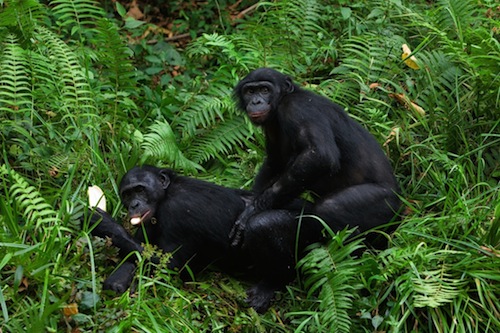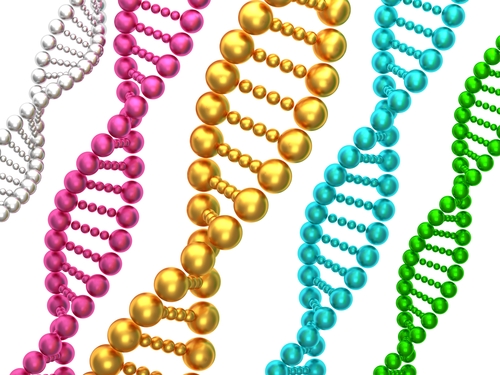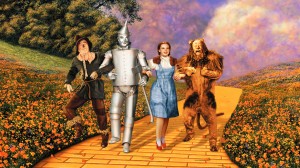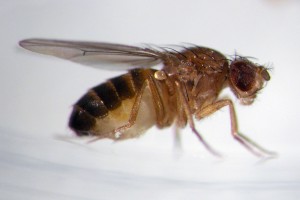 Today, in light of gay pride month and all the gay marriage business all over the news, I thought it might be time we at LWON weigh in on this most hot-button of issues. We look to biology to explain so much about how we interact and why we act how we do. But what does it have to say about rainbow flags, Suburus, and men’s cutoff jeans?
Today, in light of gay pride month and all the gay marriage business all over the news, I thought it might be time we at LWON weigh in on this most hot-button of issues. We look to biology to explain so much about how we interact and why we act how we do. But what does it have to say about rainbow flags, Suburus, and men’s cutoff jeans?

I think it’s fair to say that we have very little idea if there is a gay gene, despite years of looking. In recent years, people have suggested that homosexuality might be caused by a combination of genes, which individually imparted some kind of advantage to our ancestors. More recently mathematical models have suggested it might be an epigenetic thing, but I’m not holding my breath. It seems that, as with so much of the human experience, we won’t find an easy gene or spot in the brain to explain homosexuality.
The fundamental problem is that homosexuality is a trait that should not develop or persist in the world of natural selection. Of course, in many animals, certain individuals give up their ability to reproduce for the good of other animals – mostly who are related to them. Certain female wolves will exclusively raise their relatives’ kids and many male baboons seem content to just guard the troop.
Meanwhile, same-gender sex is enormously common. I personally have witnessed “sex” (questionable, since the penis goes in between a couple flaps that cover the other male’s penis) among young male dolphins – common as a sort of bonding experience before going in search of a female together. Females, likewise seem to be into rostrum-to-genital rubbing. That said, they still eventually breed with a member of the oposite sex.
Scientists have documented around 1,500 cases of same-sex bonding, apparently defined as behavior associated with breeding between members of the same gender. Nathan Bailey, who did a fascinating 2009 review of the evolutionary nature of same-sex bonding, points out that it’s unlikely all gay sex in nature comes from the same place. In bonobos it’s often conflict resolution, in Laysan albatross it’s a way to raise young when few males are around, and in fruit flies it’s just a case of mistaken identity. So the most interesting question that comes out of this is, “Which species have the most bearing on this question for humans?”

It’s tempting just to look at smart animals – perhaps dolphins, elephants, and great apes – because theoretically homosexuality would be a prefrontal cortex thing. Plus, for a long time it was thought that among primates only the more intelligent, big-brained humans and great apes stepped to the other side of the proverbial plate. Today we know that a couple types of smaller monkeys occasionally experiment during their college years, but great apes are still the scarecrow, tin man, and cowardly lion of the animal world. And first among them is the bonobo, our closest relative in the animal world.
But homosexual behavior in less intelligent animals is more hardwired and thus perhaps more illustrative. In fruit flies, for instance, researchers have long tinkered with the genetic underpinning of homosexual behavior, spurring it through mutations in a whole list of genes with delightful names like “dissatisfaction,” “genderblind,” “quick-to-court,” and of course “fruitless.” Most of these deal with the way the animal interprets pheromones. However, a number of studies show that these behaviors can come from their environment as well. And one amazing study shows that some male fruit flies are more likely to mount other males only when they are totally wasted. Seriously, no matter your politics this is an awesome paper (another excerpt: “Chronic ethanol exposure also affected a male’s sexual behavior toward females: it enhanced sexual arousal but reduced sexual performance.”)

Of course, there is a powerful argument against all of this. True, some animals use same-sex copulation as a behavioral tool of one sort or something they did when they were drunk off their ass and never spoke of again. But that’s different than actually preferring their own sex. Here the data gets much thinner.
Male damselflies that spend too much time with other males eventually start to prefer males over females once they have a choice. About eight percent of male bighorn sheep prefer other males. And in several hilarious cases, in order to get laid, females have to act male. And then there’s the famous chinstrap penguins and Laysan albatrosses, whose females seem perfectly happy mating for life with other females.
But the list pretty much ends there. It seems that same-sex hanky panky in the animal world might be a tool but not a lifestyle choice. But then, if aliens gave humans the kind of cursory glance we give most species, they wouldn’t notice the relatively small gay population. It would be an interesting debate but, in fact, serious research into the unnaturalness if homosexuality seems pretty thin. A lot of it seems to be focused on the genetic component, which as I’ve said isn’t terribly strong. And there’s a fair bit of research on the issue of whether gay parents have gay kids, which seems like a double-edged sword (if yes, then it’s either genetic or something you instill in your kids, depending on your bias).
In 2000, Gregory Cochran – who believes that human evolution has actually sped up since the advent of civilization – argued that homosexuality might be caused by infection. The idea, essentially, was that it’s just too hard to understand why a situation could endure where 4 percent of the population has only a 20 percent chance of reproducing. The only explanation in his mind was that some kind of microbe perpetuates it. Thus raising the possibility that – though Mr. Cochran only hints at it – it could be sexually transmitted.
Not surprisingly, despite all the recent interest in brain-changing microbes, I couldn’t find much follow-up on this theory over the intervening 13 years.

Of course, one bloc also argues it’s not an argument worth pursuing. In 2007, Luiz Sérgio Solimeo, a critic of the nature argument for homosexuality said, “The animal kingdom is no place for man to seek a blueprint for human morality.” He points to the fact that lions eat their young as a reason that the animal kingdom is not to be trusted as a reflection about what is right or natural for humans. On the face of it, it’s hard to argue this. I am currently working on a story about a widespread seabird whose behavior can only be described as highly uncivilized when it comes to their siblings, progeny and neighbors. Outside of Jersey Shore and a few Mexican telenovelas I watch to practice Spanish, it’s hard to imagine any humans behaving in such a way.
But then why do we study animal behavior at all? Or cultural anthropology or even human history? Certainly classic Rome, ancient Mesoamerica, and Spain in 1500 were no place to seek a blueprint for morality either. But we look at them to better understand who we are and what human nature means. We do it to get to the heart of what it means to live on this little planet. I truly want to know how much of my seabird’s naughty behavior is tied to fundamental rules of living. And while no one is suggesting we eat our children like lions … okay, while no one except Tom Hayden is suggesting we eat our children like lions, many cultures have polygamy like lions do. Aren’t we a little curious if there’s a reason for that?
Photos courtesy of Shutterstock
First of all, there is nothing wrong with wanting to know where sexuality comes from and from asking tough questions, even if it may ruffle some feathers. The gay community in general, from my own personal experience, has it in mind that homosexuality is genetic. They may be right, but so far, that’s unproven. Then again, so is the standard bigot line of it being a choice or some kind of disease. Those claims are entirely unproven, and as far as the choice claims goes, completely ridiculous. That is where the double-standard exists. So many are trying to discover the origins of homosexuality, and yet the origins of heterosexuality remain deep in the same mystery. A lot of people seem to entirely forget that heterosexuality’s origins are also unknown. Is it more important to find the answers of one question over the other, especially when so many more people are heterosexual? It seems to me that the origins of homosexuality would be easier to discover if more people were focusing their research on the orientation that the vast majority of people seem to have: heterosexuality. Is it genetic for them? Environmental? A combination? Something entirely different? Then again, maybe we’re looking at it the wrong way. Does knowing where sexuality comes from change how we see other people or not? Religion, for example, is a personal choice. It causes massive conflicts around the world and has, at times, held back the proliferation of ideas. Yet it is entirely wrong to discriminate against people of faith, to prevent them from attaining equality and from reaching the unalienable right of happiness within their own lives. So if sexuality, one day, was discovered to be a choice, conscious or otherwise, would it be any different than someone being Christian over Muslim? For my part, I don’t think so. Truth is very important, but so is knowing what to do with it once you have gained it.